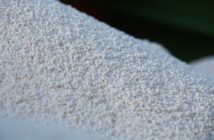Findings suggest that current approaches to catchment management may not deliver unless they target both sediment and nutrients to allow riverbeds to “breathe.”
Research on the River Taw, Devon, revealed that a build-up of ultra-fine sediment in riverbeds is creating oxygen-starved conditions that threaten fish spawning grounds and freshwater invertebrates.
A team of Rothamsted scientists found that the smallest sediment particles trapped in riverbed gravel can exert a disproportionally high “oxygen demand” as organic material within them decomposes, depriving eggs and larvae of vital oxygen. The problem appeared to be most acutely related to the very smallest particles in the <25μm fraction of sediment — fine material that settles into riverbed pores and is difficult to flush out.
The study, which analysed sediment oxygen demand (SOD) across nine sites on the Taw, from upland grassland to lowland farmland receiving wastewater discharges, showed consistently higher oxygen demand in riverbed sediments than in their upstream sources. Researchers concluded that trapped algal material within these ultra-fine particles was the likely culprit.
These fine deposits both block natural pore spaces in the gravel and fuel oxygen depletion, creating a double threat to aquatic life.
One key finding of the study was that oxygen demand of the sediment did not vary when moving downstream to more intensively farmed land, so increased oxygen demand in channel bed sediments couldn’t be clearly linked to the sediment sources. Catchment management, therefore, has to reduce the nutrient concentrations within the streams to limit algal growth or limit the amount of coarser sediment on the bed which forms a matrix in which the ultra-fine fraction can be trapped.
The findings suggest that current approaches to river management may not deliver the best results unless they target both sediment and nutrient sources on land, and in-channel processes that allow riverbeds to “breathe.”
“Reducing in-stream productivity is likely to be very difficult,” said Dr Simon Pulley who led the study, “so a combined approach — reducing nutrient inputs to rivers and limiting the ability of ultra-fine material to be retained on the channel beds by reducing fine sediment losses from land and channel banks will be needed to restore healthier habitats.”
The work highlights the complex links between land use, sewage inputs, and river ecology at a time when freshwater quality in England is under intense public and political scrutiny.



